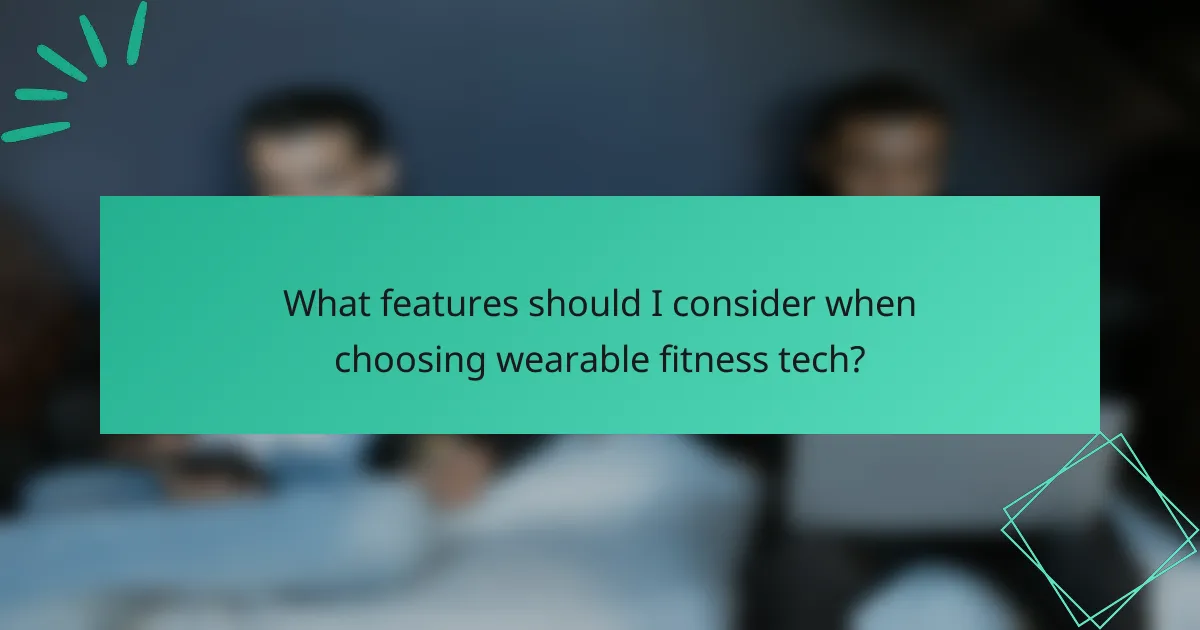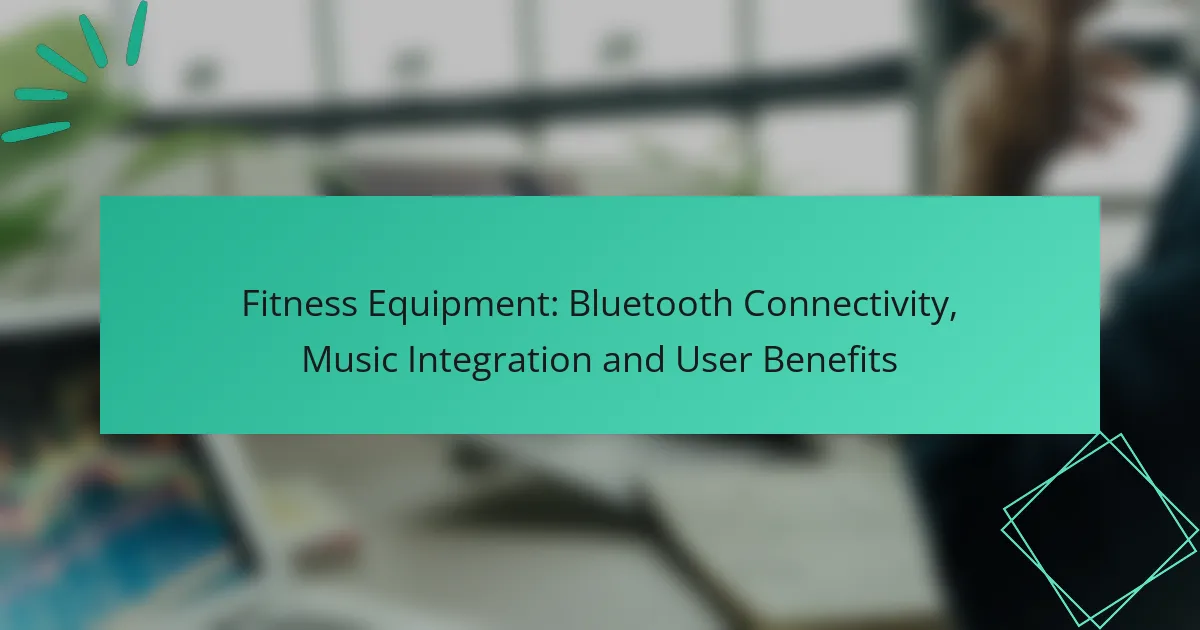Wearable fitness technology has revolutionized how individuals approach their health and fitness journeys, offering a range of devices that combine health tracking features with smartphone compatibility. These devices provide real-time data and insights, empowering users to optimize their workouts and monitor their progress effectively. When choosing the right wearable, it’s essential to consider features that align with personal fitness goals and lifestyle needs.

What are the best wearable fitness tech options in Australia?
The best wearable fitness tech options in Australia include devices that offer a mix of health tracking features, compatibility with smartphones, and user-friendly interfaces. Popular choices cater to various fitness levels and preferences, making it easier for individuals to monitor their health and achieve their fitness goals.
Apple Watch Series 8
The Apple Watch Series 8 is a top-tier smartwatch that combines fitness tracking with smart features. It offers heart rate monitoring, sleep tracking, and an ECG app, making it suitable for serious fitness enthusiasts and casual users alike.
With its seamless integration with iOS devices, users can receive notifications, track workouts, and access various health metrics directly from their wrist. The battery life typically lasts around 18 hours, which is adequate for daily use but may require nightly charging.
Fitbit Charge 5
The Fitbit Charge 5 is a versatile fitness tracker known for its comprehensive health monitoring capabilities. It features built-in GPS, heart rate tracking, and stress management tools, making it a great option for those focused on overall wellness.
This device boasts a battery life of up to seven days, allowing for extended use without frequent charging. Its compatibility with both iOS and Android devices ensures that users can sync their data easily and access the Fitbit app for detailed insights.
Garmin Forerunner 255
The Garmin Forerunner 255 is designed for runners and outdoor enthusiasts, offering advanced features like GPS tracking, training plans, and performance metrics. It provides insights into running dynamics, recovery time, and even sleep quality.
With a battery life of up to two weeks in smartwatch mode and up to 30 hours in GPS mode, this device is ideal for long-distance athletes. Its compatibility with both Android and iOS devices allows for easy data synchronization and analysis.
Samsung Galaxy Watch 5
The Samsung Galaxy Watch 5 is a feature-rich smartwatch that excels in fitness tracking and smart functionalities. It includes heart rate monitoring, body composition analysis, and sleep tracking, catering to a wide range of health needs.
This watch integrates well with Samsung smartphones, providing notifications and app access directly on the wrist. Battery life typically lasts around 40 hours, making it a reliable choice for daily wear without frequent recharging.
Xiaomi Mi Band 7
The Xiaomi Mi Band 7 is an affordable fitness tracker that offers essential health monitoring features, including heart rate tracking and sleep analysis. Its compact design and lightweight build make it comfortable for all-day wear.
With a battery life of up to two weeks, this device is perfect for budget-conscious users looking for basic fitness tracking. It is compatible with both Android and iOS devices, allowing for easy data synchronization through the Mi Fit app.

How do wearable fitness devices enhance workouts?
Wearable fitness devices enhance workouts by providing real-time data and insights that help users optimize their performance. These devices track various metrics, allowing individuals to monitor their progress and make informed decisions about their fitness routines.
Real-time heart rate monitoring
Real-time heart rate monitoring allows users to track their heart rate during workouts, ensuring they stay within their target zones for optimal performance. Many devices provide alerts when your heart rate exceeds or drops below set thresholds, helping to prevent overexertion or undertraining.
For effective training, aim to maintain your heart rate within 50-85% of your maximum heart rate, which can be roughly calculated as 220 minus your age. This range enhances cardiovascular fitness and maximizes calorie burn.
Activity tracking and goal setting
Activity tracking features in wearable fitness devices monitor steps taken, calories burned, and distance traveled, providing a comprehensive view of daily activity levels. Users can set specific goals, such as reaching a daily step count or completing a certain number of workouts each week.
To stay motivated, consider using the SMART criteria for goal setting: Specific, Measurable, Achievable, Relevant, and Time-bound. For example, aim to walk 10,000 steps daily for a month to build consistency.
Sleep analysis and recovery insights
Sleep analysis features in wearable devices track sleep patterns, duration, and quality, offering insights into how well you recover overnight. Understanding your sleep can help you adjust your routines for better performance and overall health.
Many devices provide recommendations for improving sleep quality, such as maintaining a consistent bedtime, reducing screen time before sleep, and creating a comfortable sleep environment. Aim for 7-9 hours of sleep per night to support optimal recovery and performance.

What features should I consider when choosing wearable fitness tech?
When selecting wearable fitness technology, prioritize features that align with your fitness goals and lifestyle. Key considerations include compatibility with smartphones, battery life, water resistance, and health monitoring capabilities.
Compatibility with smartphones
Ensure that the wearable device is compatible with your smartphone’s operating system, whether it’s iOS or Android. Many devices offer seamless integration with popular fitness apps, enhancing your tracking experience.
Check for Bluetooth connectivity and any specific app requirements. Some wearables may only work with certain models or brands, so verify compatibility before purchasing.
Battery life and charging options
Battery life varies significantly among wearable fitness devices, typically ranging from a few days to several weeks on a single charge. Look for models that fit your usage patterns, especially if you plan to wear them continuously.
Consider the charging options available. Some devices use proprietary chargers, while others may support standard USB charging. Quick charging features can also be a bonus for busy users.
Water resistance ratings
Water resistance is crucial if you plan to use your wearable while swimming or in wet conditions. Look for devices with an IP rating or ATM rating that indicates their level of water resistance.
For swimming, a rating of at least 5 ATM (50 meters) is recommended. This ensures the device can withstand immersion in water without damage.
Health monitoring capabilities
Evaluate the health monitoring features offered by the wearable, such as heart rate tracking, sleep monitoring, and activity tracking. Some devices provide advanced metrics like blood oxygen levels or ECG readings.
Consider how these features align with your fitness goals. For instance, if you’re focused on improving cardiovascular health, a device with accurate heart rate monitoring will be beneficial.

What are the benefits of using wearable fitness technology?
Wearable fitness technology offers numerous advantages, including enhanced tracking of physical activity, improved health awareness, and increased motivation. These devices help users monitor their fitness levels and set achievable goals, leading to better overall health outcomes.
Improved motivation and accountability
Wearable fitness devices can significantly boost motivation by providing real-time feedback on progress. Users can set personal goals and receive notifications or reminders to stay on track, making it easier to maintain a consistent exercise routine.
Additionally, many wearables allow users to share their achievements with friends or social networks, fostering a sense of accountability. This social aspect can encourage individuals to push themselves further and celebrate milestones together.
Personalized fitness insights
Wearable fitness technology collects data on various metrics, such as heart rate, steps taken, and sleep patterns. This information is analyzed to provide personalized insights that help users understand their fitness levels and identify areas for improvement.
For example, a user may discover that they are not getting enough sleep or that their heart rate spikes during certain activities. These insights enable individuals to make informed decisions about their fitness routines and overall health strategies.
Integration with fitness apps
Many wearable devices seamlessly integrate with popular fitness apps, enhancing their functionality. This integration allows users to track their workouts, monitor nutrition, and analyze performance over time in one convenient location.
Some wearables even offer compatibility with health platforms, enabling users to share data with healthcare providers. This can be particularly beneficial for those managing chronic conditions or seeking tailored health advice.

How do I ensure compatibility with my smartphone?
To ensure compatibility with your smartphone, check if your wearable fitness tech supports the same operating system and Bluetooth version as your device. Most modern wearables are designed to work with both Android and iOS, but verifying compatibility is crucial for optimal performance.
Check Bluetooth compatibility
Bluetooth compatibility is essential for connecting your wearable device to your smartphone. Most fitness trackers and smartwatches use Bluetooth 4.0 or higher, which allows for better battery efficiency and range. Ensure your smartphone supports at least this version to avoid connectivity issues.
To check Bluetooth compatibility, navigate to your smartphone’s settings and look for the Bluetooth version listed. If your device is outdated, consider upgrading to a newer model that supports the latest Bluetooth standards for improved functionality.
Review app availability
Each wearable fitness device typically requires a dedicated app for full functionality, so reviewing app availability is key. Check if the app is available on your smartphone’s app store and whether it supports your device’s operating system version. Popular fitness wearables often have apps compatible with both Android and iOS.
Additionally, read user reviews and ratings to gauge the app’s performance and reliability. Some wearables may offer limited features if the app is not fully compatible, so ensure you choose a device with robust app support for the best experience.



